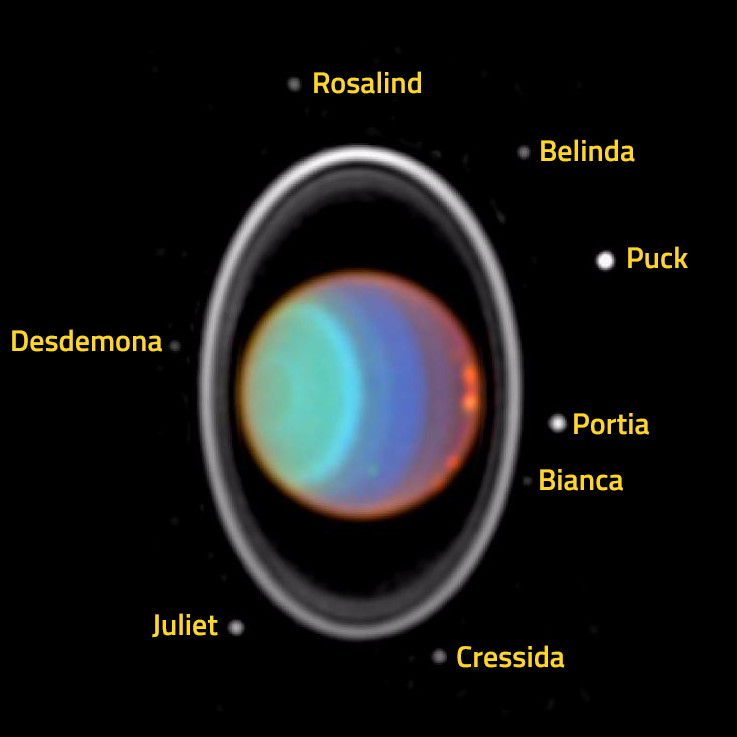Bianca, a moon of Uranus

Image of Uranus in infrared from Hubble Space Telescope. Image was taken on 28th July 1997, capturing clouds in the atmosphere of Uranus, its rings and 8 of its moons, including Bianca. Image credit: NASA/JPL/STScI
36,785 miles
34 miles
Bianca is one of the 27 moons of Uranus. It is the third closest moon to orbit the planet, orbiting at an average distance of 59,200 kilometres (36,787 miles). Bianca has a diameter of 54 kilometres (34 miles) and takes only 10 hours to complete an orbit of the planet.
Bianca is classed as an inner regular prograde moon of Uranus. It travels around the planet in the same direction of the planet's rotation and is believed to have formed from materials spinning around the planet.
Bianca is a a member of a group of Uranus' moons called the Portia group. The Portia group contains nine moons (Bianca, Cressida, Desdemona, Juliet, Portia, Rosalind, Cupid, Belinda and Perdita) which have similar appearances and characteristics. These moons may have unstable orbits which leads to the possibility that they could collide with each other, break up into pieces, form rings or crash into Uranus.
Bianca is a character in William Shakespeare's play The Taming of the Shrew (1590 - 1592). She is the younger sister of Katherina (Kate), the "shrew" of the play's title. Kate is depicted as being fussy and hard to please, whereas Bianca is sweet and easy-going. This causes Bianca to be more popular, and of interest to several men who want to marry her.
Bianca is not allowed to get married until a suitor is found for her sister, Kate. Kate meets Petruchio, they seem like a good match, and Petruchio sets about taming Kate's strong personality. Meanwhile, Bianca falls in love with Lucentio, who disguises himself as her tutor to get close to her, and they marry in secret.
All moons of Uranus are named after characters in plays by William Shakepeare or a poem by Alexander Pope. Bianca is the only moon of Uranus to be named after a character in The Taming of the Shrew. The moon is also designated as S/1986 U 9 or Uranus VIII.





